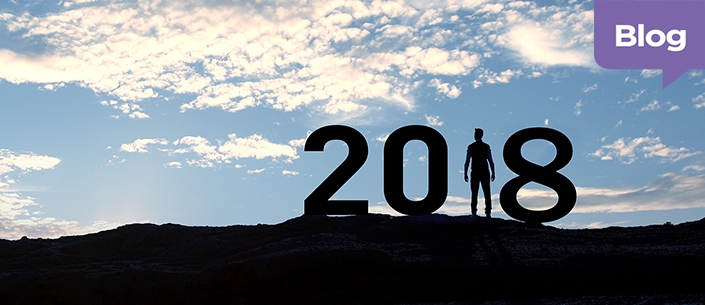
The 2018 Human Resources Trends to Keep an Eye On
More than half of organizations will be hiring in 2018 – but still at a slowing rate.
According to the LinkedIn 2017 Global Recruiting Trends Report, over half (56%) of recruiters say their hiring volume will increase in the next year. However, that represents a drop of 5 points over the past two years, and challenges remain. Their survey found that the “most important trends that will define the future of recruiting” include recruiting more diverse candidates, performing soft skills assessments, and utilizing innovative interviewing tools. Organizations are also increasing their use of technology in recruitment efforts.
HR technology continues to make inroads – especially workforce analytics.
The Randstad Sourceright 2017 Talent Trends Report found that an overwhelming number of respondents (71%) agree that “technology has made recruiting simpler and more efficient.” Further, according to Deloitte’s 2017 Human Capital Trends, over half (56%) of organizations are redesigning their HR programs to leverage digital and mobile tools. Support for HR analytics is a major driver of the move to digital HR, with only 14% of respondents to PwC’s 2017 “What’s now and what’s next in human resources technology” reporting that they are currently very satisfied with their analytics technology.
Forget employee engagement. Now it’s all about “employee experience.”
Well, don’t forget employee engagement. It’s just that engagement rates have remained flat for almost as long as they’ve been tracked, according to Gallup. The new approach to addressing this program is to focus on the totality of “employee experience.” As Deloitte describes it, “Rather than focusing narrowly on engagement and culture, many leading organizations aim to improve the employee experience as a whole, supported by a multitude of pulse feedback tools, wellness and fitness apps, and employee self-service technologies.” This is where newfound ideas like design thinking in HR come into play: it’s all about making sure the employee experience is conducive to optimizing performance and productivity.
Annual retrospective employee reviews are dying; ongoing, forward-looking feedback is rising.
We were already asking way back in 2012 whether performance reviews were antiquated and outdated. Indeed, as we move into 2018, it appears annual performance reviews may finally be going extinct as managers begin to provide feedback much more frequently. When software company Adobe revamped their performance management system to emphasize regular feedback, they saw a 30% reduction in voluntary employee turnover. That may be because ongoing and forward-looking feedback gives employees the information they need to make improvements, when they need it, and feedback delivered in bite-sized pieces can be easier to swallow.
The gig economy is on the rise.
Freelancers now make up over a third (35%) of the U.S. workforce – and that number is likely to continue growing. There’s a generational aspect to this issue: nearly half of Millennials are already freelancing, and as their generation continues to replace retiring Baby Boomers, that means the gig economy could continue to expand. This can be helpful to organizations who can contract projects and functions without hiring full-time staff. Yet there’s room for improvement here: Deloitte’s 2017 Human Capital Trends report found that a scant 9% of organizations feel they are excellent at managing gig and talent-sharing economy resources.
CoAdvantage, one of the nation’s largest Professional Employer Organizations (PEOs), helps small to mid-sized companies with HR administration, benefits, payroll, and compliance. To learn more about our ability to create a strategic HR function in your business that drives business growth potential, contact us today.